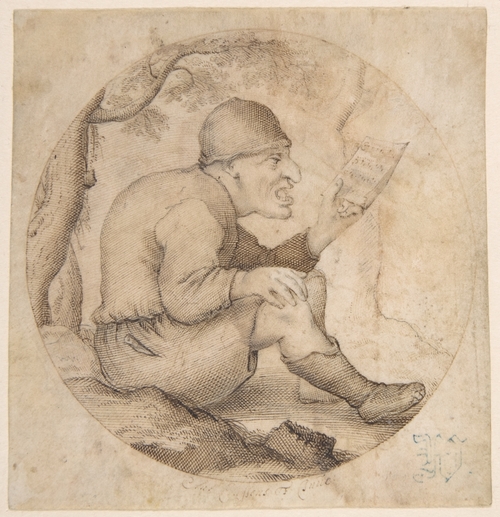The public worship described in Ephesians 5.18-21 is not pop music -- music designed first and foremost to sell. The writing of Ephesians predates mass popular culture by almost two millennia. Furthermore, the letter does not describe what I call "art music" -- an admittedly trouble-filled term that I use for music written in and for the development of the Western tradition. Music in this tradition starts roughly with Léonin and Pérotin in the high middle ages, more than a thousand years after Paul.
(Complications regarding the interactions between pop and art music I defer, but do not deny.)
What Ephesians describes is folk singing: a group of people making a corporate sound that develops from who they are and how they live. In suburban, white America -- as opposed to ethnic enclaves -- folk singing is all but dead. We're way too cool.
I am sensitive to a danger in this line of thought about worship. Practices from the past won't restore authenticity to a church just because they are old. A church is not a museum. Public worship needs to be alive -- that is, needs to express what Christianity is now. I am not warming up to argue that we should recover the past, as if it were possible.
But I am saying that we should know what the past was, and know that it is not interchangeable with today's default musical practices. In human history, the practice of buying music instead of making it is such a recent development that it might as well have happened yesterday. People who have no sense of the past -- I'll put this very diplomatically -- have been setting evangelical standards for public worship, and as a result they tend to assume that Martin Luther thought the same way about music that they do.
He didn't.
So, what precisely do we need to recover from Ephesians 5? Do we need sheet music for the psalm chants used by 1st century Jews? (It doesn't exist. And if it did, we wouldn't be able to read it.) Do we need to ditch diatonic harmony and teach congregations to sing in the quarter-tones ancient cultures used then and still use today? (Americans-by-birth don't even hear quarter-tones. My violin professor went on a tour of the middle east in 1990. Trying to play quarter-tones with an Arab violinist, he asked whether he was playing in tune. The Arab pulled a face and said, "Close." Which is to say, no.)
I think what we need to recover is the dynamic of people making music together. Stated differently, we need to rebuild the fundamentals of singing in groups, not as performance, nor as entertainment, but as participation in a way of life. I believe those fundamentals are: a resonant physical space, a shared memory of songs, a stripped-down melodic style, and a belief system that is prejudicial.
So, pretty much all of this will be controversial.
Consider the impact of physical space on singing.
The vast majority of churches built today are designed for visual appeal and technological flexibility. They are designed for sound only as an after-thought -- and a quite expensive one. Not far from here is a church my family has long referred to as the golden golf ball. It looks like it fell from a stratospheric height and created an immense divot.
The builders assumed that the sound inside the dome would be wonderful, but for various technical reasons the sound was appalling. In order to control wave-reflection, the interior had to be piled and sprayed with every imaginable kind of sound-absorbing material. The result? You can fill the golden golf ball with thousands of people, and they can all belt out songs at the top of their voices, but the only person you'll actually hear singing is . . . you.
Farmers built barns that were more suitable for singing than most contemporary churches. Partly, the suitability was a matter of materials. Our forefathers built with wood. The churches they raised were finished inside with plaster. When the people started to sing, you felt it.
(One evening I asked Kyle Wiley Pickett, conductor of the North State Symphony, why orchestra members loved playing in old vaudeville halls, whether the beautifully renovated Cascade Theater in Redding, or the less well-appointed halls in Oroville and Red Bluff. He felt sure it was the plaster.)
Now, the old spaces are too hardened for much electronic amplification, and the pre-microphone past is not one we want to recover. Even so, churches don't have to keep building dead sound spaces. They could design their worship settings to enliven the singing of the people.
More on the fundamentals of the folk dynamic next week.

